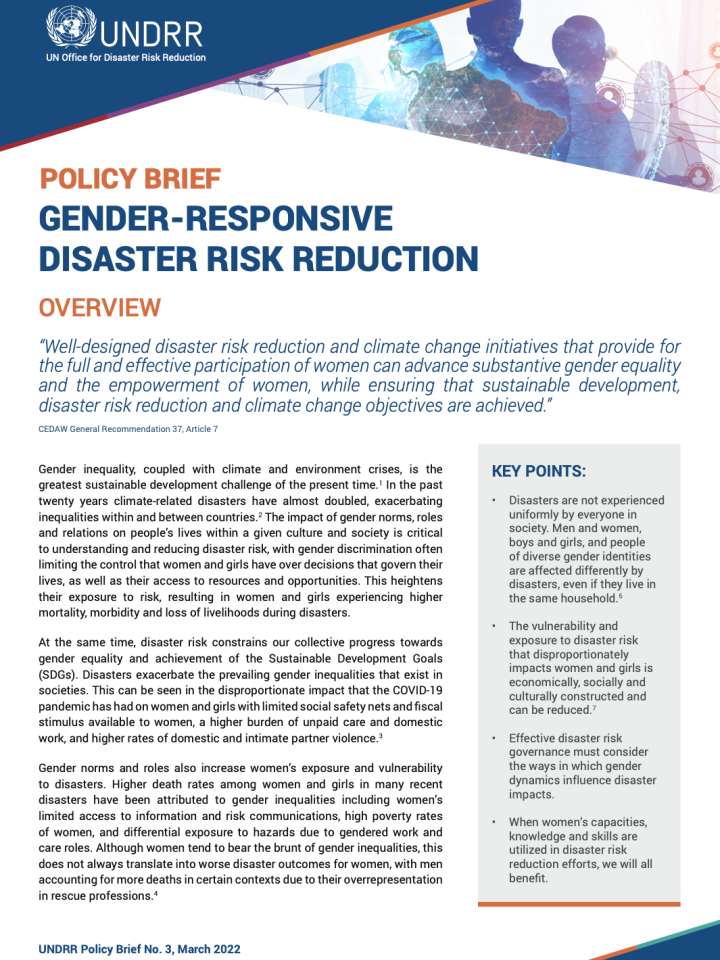Policy brief: Gender-responsive disaster risk reduction
This policy brief explores challenges faced in gender-responsive disaster risk reduction. Gender inequality, coupled with climate and environment crises, is the greatest sustainable development challenge of the present time. In the past twenty years climate-related disasters have almost doubled, exacerbating inequalities within and between countries. The impact of gender norms, roles and relations on people’s lives within a given culture and society is critical to understanding and reducing disaster risk, with gender discrimination often limiting the control that women and girls have over decisions that govern their lives, as well as their access to resources and opportunities. This heightens their exposure to risk, resulting in women and girls experiencing higher mortality, morbidity and loss of livelihoods during disasters.
The key points of the policy brief are:
- Disasters are not experienced uniformly by everyone in society. Men and women, boys and girls, and people of diverse gender identities are affected differently by disasters, even if they live in the same household.6
- The vulnerability and exposure to disaster risk that disproportionately impacts women and girls is economically, socially and culturally constructed and can be reduced.7
- Effective disaster risk governance must consider the ways in which gender dynamics influence disaster impacts.
- When women’s capacities, knowledge and skills are utilized in disaster risk reduction efforts, we will all benefit.
